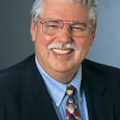MARKET WATCH: Crude ends rally as oil, gas prices fall
The price of the front-month crude contract dropped 1.1% Feb. 27, ending an eight-session rally in the New York market, after the Group of 20 finance ministers from the world’s largest economies rejected requests for financial assistance in the European crisis at their meeting in Mexico City.
Natural gas tumbled 4.1% in that market on forecasts of continued “abnormally” mild weather, said analysts in the Houston office of Raymond James & Associates Inc.
Following the close of floor trading in the New York market, Standard & Poor’s downgraded Greece’s already junk-level credit rating, declaring the country to be in “selective default” on its sovereign debt.
Weaker economic indicators also undermined crude prices. The US Department of Commerce reported a 4% drop in January sales of manufactured goods, exceeding the 1% loss economists expected. Home prices also were down.
However, the Conference Board reported Feb. 28 that US consumer confidence jumped this month to its highest level in a year on public perception of an improving job market. That raised the Consumer Confidence Index to 70.8 from a revised 61.5 in January. Analysts expected an increase only to 63.
“Oil products were also under pressure as demand is being crippled by high oil prices,” said James Zhang at Standard New York Securities Inc., the Standard Bank Group. “The time spread in both Brent and ICE gas oil continues to weaken, with the backwardation in the front-end of ICE gas oil curves flattening substantially.” A similar move is developing in the structure of reformulated stock for oxygenate blending (RBOB) gasoline and heating oil in the New York market, “which reinforces a bearish physical demand picture,” he said.
Some say high oil prices have surpassed the Euro-zone debt crisis as the biggest threat to global economy. This has produced calls for member nations of the Organization for Economic Cooperation and Development to release strategic reserves to drive down prices. “While this is unlikely to take place immediately, we do see a decent probability of a release taking place if prices stay at the current level or even climb further over the coming weeks,” Zhang said. “Meanwhile, Saudi Arabia is likely to push more oil to the market in an attempt to prevent a stock release by the OECD.”
He said, “While both scenarios remain rather uncertain, we still foresee weakness in the oil market induced by a soft physical market.” Zhang sees “various signs that the physical market has been squeezed by heated oil prices. As we approach month-end, there a good chance that net long position holders are tempted to lock in their gains, as on aggregate the net speculative length has been at very high level.”
Energy prices
The April contract for benchmark US sweet, light crudes dropped $1.21 to $108.56/bbl Feb. 27 on the New York Mercantile Exchange. The May contract lost $1.16 to $109.02/bbl. On the US spot market, West Texas Intermediate at Cushing, Okla., was down $1.21 to $108.56/bbl, still in pace with the front-month futures contract.
Heating oil for March delivery declined 2.95¢ to $3.29/gal on NYMEX. RBOB for the same month decreased 2.45¢ to $3.13/gal.
The March natural gas contract fell 10.4¢ to $2.45/MMbtu on NYMEX. On the US spot market, gas at Henry Hub, La., retreated 4.4¢ to $2.56/MMbtu.
In London, the April IPE contract for North Sea Brent was down $1.30 to $124.17/bbl. Gas oil for March increased $1.50 to $1,032.25/tonne.
The average price for the Organization of Petroleum Exporting Countries’ basket of 12 benchmark crudes gained 39¢ to $123.25/bbl.
Contact Sam Fletcher at [email protected].
About the Author

Sam Fletcher
Senior Writer
I'm third-generation blue-collar oil field worker, born in the great East Texas Field and completed high school in the Permian Basin of West Texas where I spent a couple of summers hustling jugs and loading shot holes on seismic crews. My family was oil field trash back when it was an insult instead of a brag on a bumper sticker. I enlisted in the US Army in 1961-1964 looking for a way out of a life of stoop-labor in the oil patch. I didn't succeed then, but a few years later when they passed a new GI Bill for Vietnam veterans, they backdated it to cover my period of enlistment and finally gave me the means to attend college. I'd wanted a career in journalism since my junior year in high school when I was editor of the school newspaper. I financed my college education with the GI bill, parttime work, and a few scholarships and earned a bachelor's degree and later a master's degree in mass communication at Texas Tech University. I worked some years on Texas daily newspapers and even taught journalism a couple of semesters at a junior college in San Antonio before joining the metropolitan Houston Post in 1973. In 1977 I became the energy reporter for the paper, primarily because I was the only writer who'd ever broke a sweat in sight of an oil rig. I covered the oil patch through its biggest boom in the 1970s, its worst depression in the 1980s, and its subsequent rise from the ashes as the industry reinvented itself yet again. When the Post folded in 1995, I made the switch to oil industry publications. At the start of the new century, I joined the Oil & Gas Journal, long the "Bible" of the oil industry. I've been writing about the oil and gas industry's successes and setbacks for a long time, and I've loved every minute of it.